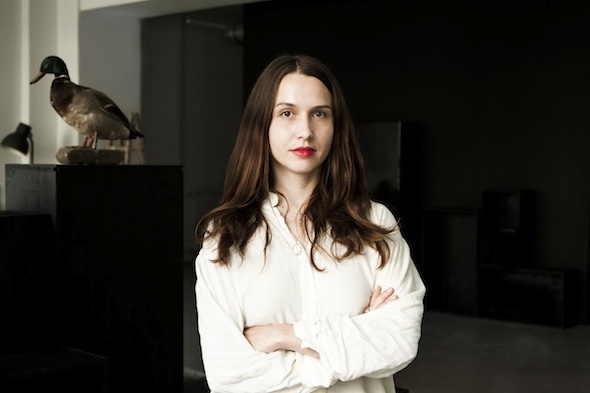Interview by Lars Paschke in Berlin // Tuesday, Jul. 07, 2015
Berlin Art Link: Besides working as a gallerist at GILLMEIER RECH, you have also worked as a fashion editor in Berlin. Do you find there are similarities between the art and fashion world? What crossovers are there in observing or analysing art versus fashion?
Claudia Rech:There are not many similarities: Working in fashion and in art is very different, but a common ground for art and fashion is the ability to translate an idea, a feeling or even just a vibe into something solid that will last an eternity.
BAL: Do you approach fashion the same way you approach art?
CR: Yes, fashion is a form of art and vice versa. What leads me in both fields is instinct, I learned how to trust it and not fear any wrong decisions; There are no bad decisions, if you follow your instinct and passion.
BAL: What’s your relationship with fashion?
CR: I’d say it is like a hobby, something I do out of pleasure. I came to fashion through my first writing jobs for an Italian magazine years ago, and then later through a job as fashion editor and stylist but I studied art history, so I’d say I sort of “stumbled” into fashion. I always cared about it and followed it, but it was more in the back of my mind. It is an interest I like to take care of, and a world that fascinates me.
BAL: Berlin is more renowned for its art scene and is famously regarded as a city that “doesn’t care about fashion.” Do you agree? And why do you think that is?
CR: Yes, absolutely. Berlin is associated with art more than fashion and it has historical reasons. The art community began flourishing after the fall of the wall, and as the city grew and became richer, the fashion industry came in. Fashion never grew organically in this city, and if it could have, the events of WW2 definitely took a huge toll on that development since the garment factory was in majority kept alive by the Jewish community. It never works when you try to impose something onto a city, it will rebel but if you let the city grow slowly into something, it can become a mecca. Culture, as we know, is always generated from the streets and history. It is very simple: create first a tradition and/or a community and then have the market come in to generate revenue. Berlin did the opposite, it just brought in the capital first and then hoped for a fashion scene to flourish without having the solid fundaments of a scene.
BAL: What comes to mind when you think of Berlin fashion?
CR: The color black and sport shoes. It is very casual.
BAL: To you, what makes a good designer?
CR: This might sound clichéd, but a good designer is able to translate her/his vision and have a trademark. Basically: have a consistency in class and style and focus on a peer group, don’t try to be all over the place, just be yourself and transform it into an identity for your clothes. Fashion is about desire and creating desire, if you manage to do that, then you are good!
BAL: You are participating as a juror for SCHAU15, the end of year fashion show for the Universität der Künste. What do you expect to see coming out of UDK?
CR: Many things, UDK has a great program!
BAL: When compared to other arts or design programs, fashion design or theory programs are closely linked not only to design, but to capital, growth and industry as well. Do you think the art or fashion business should be more involved in art education or less?
CR: Yes, I think it is important to prepare art and fashion students for the real world. There are a few industry tricks students should just know about in advance.
BAL: Where do you think fashion belongs: to culture or to capital?
CR: Both! Because it stems from culture and it undeniably generates capital.
___________________________________________________________________________________
Additional Information
UNIVERSITY OF THE ARTS BERLIN
“SCHAU15” – RUNWAY SHOW
Exhibition: Jul. 10, 2015; 7pm
Erika-Heß-Eisstadion
Müllerstraße 185, Berlin-Wedding (click here for map)
___________________________________________________________________________________



























